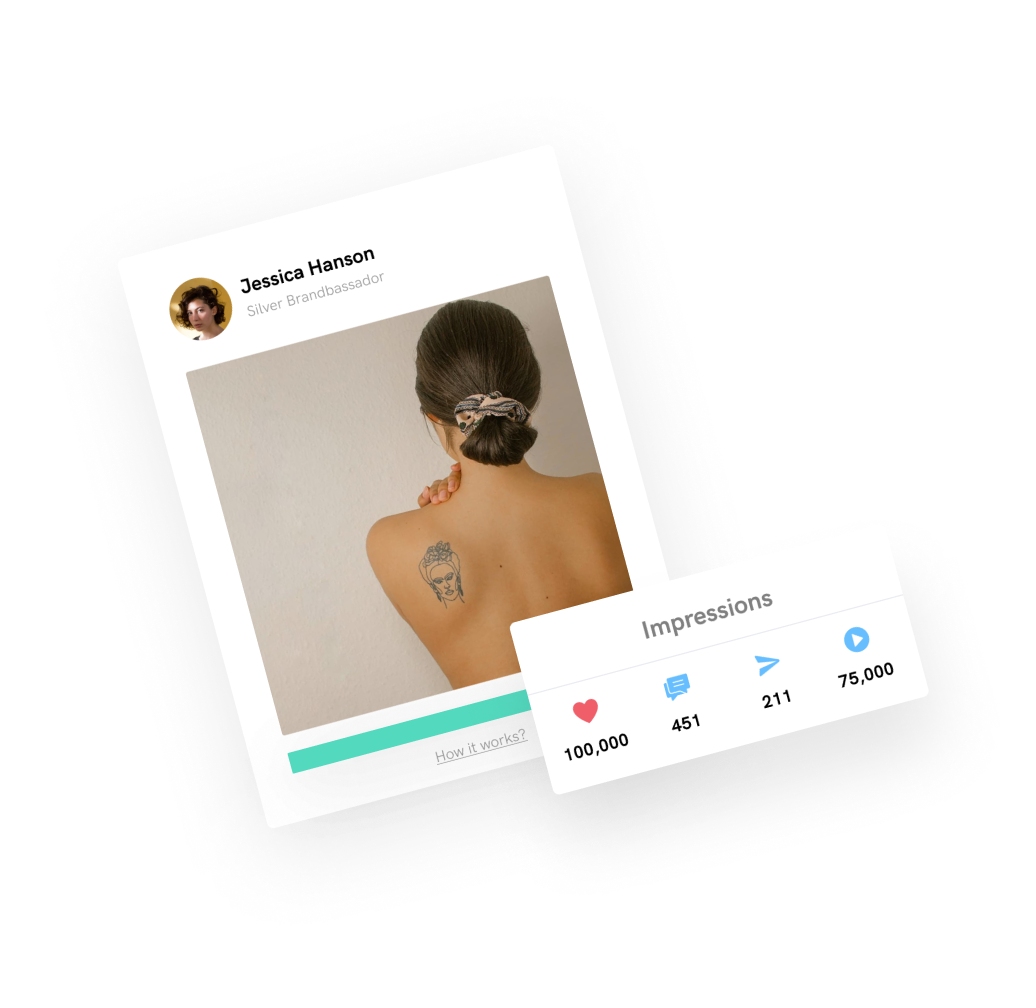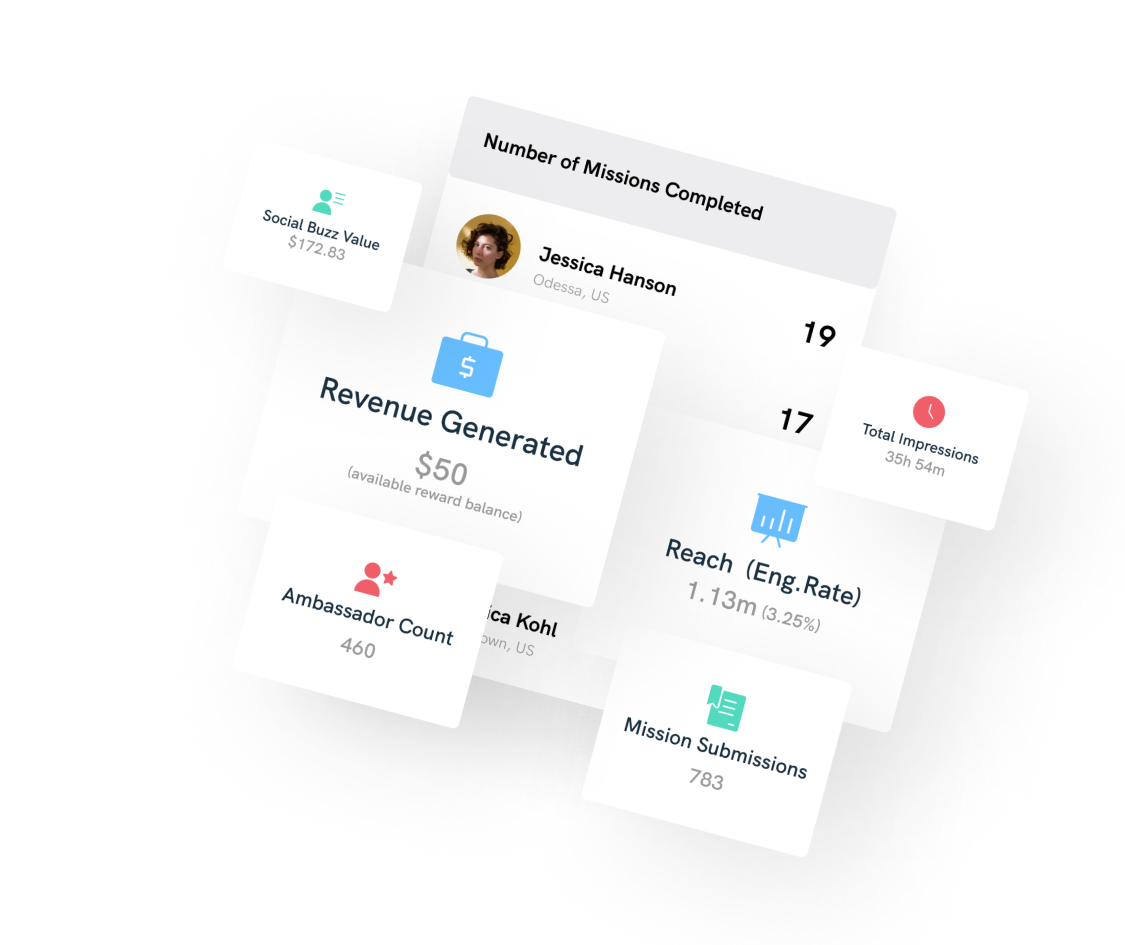People trust their friends, family members, and influencers more than brands when it comes to recommendations about products and services.
A study by Matter Communications reveals that only 38% of consumers are likely to trust recommendations from a brand on social platforms, compared to 61% from family, friends, and influencers.
So as you are getting ready to launch your marketing campaigns this year, why not tap into the pool of influencers looking for brands to partner with? It might just be your golden ticket to boosting your sales tenfold.
But before you dive headfirst into the deep end with influencer marketing, there's more to a successful campaign than throwing money at the biggest influencers on the internet and sending them out into the abyss.
Without a solid strategy, brands often find themselves facing influencer marketing mistakes that drain budgets without delivering results.
You need an effective strategy that'll deliver results — and without careful planning and attention to detail, there are plenty of ways to make mistakes.
But don't worry. In this guide, we'll share five of the most common influencer marketing mistakes and how you can avoid them during your marketing campaigns.
Are you ready to learn more?
Let's dive in.
5 Influencer Marketing Mistakes to Avoid
1. Picking the wrong influencer for your brand
Social media influencers can significantly expand your brand's outreach, with at least 1.478 billion people using Instagram right now.
However, successful influencer marketing isn't as simple as hiring anyone with a large online following. The wrong influencer can waste time and resources and hurt your brand reputation.
You want to find an influencer who fits your brand personality, aligns with your values and mission and is truly excited to work with you.
Let’s take a look at an example. Suppose you want to launch a campaign about how to become a healthcare professional (HCP) such as a travel nurse. Your first step in your online HCP engagement strategy is to create a list of requirements your influencer must meet to secure the job.
For instance, you don't want to partner with someone that doesn't have the proper nursing education. Before signing on with an influencer, verify that they have at least an Associate Degree in Nursing (ADN) to meet your Registered Nurse (RN) requirements.
Once you find someone that meets your basic requirements, check their online profile, social media posts, and videos before selecting. Their personality and content need to match your service.
Also, you don't want an influencer who repeats the same post repeatedly on different platforms. So look for someone who goes the extra mile to engage their followers. Check to see if they like or reply to comments. It also doesn't hurt to take a peek at their media kit for testimonials on past brand deals.
Lastly, you want to ensure your collaborations with influencers have the same or a similar aesthetic to your brand messaging.
It doesn't have to be an exact match, but falling somewhere in the wheelhouse is ideal. Then, when launching a new collaboration campaign, use tools to edit photos and videos for consistency with colour palette and other visual elements.
2. Forgetting about your target audience
When running a new campaign, you want to ensure that everything feels natural and organic — that's the whole point of influencer marketing. The goal is to use the power of trust and social proof to influence your audience’s purchasing decisions.
But suppose the influencer you are working with suddenly starts speaking in an entirely different voice than what their followers typically expect from them. In that case, it won't be a good fit. Your target audience might find it spammy and run for the hills.
To prevent this dreaded fate, take some time to learn more about your target audience before diving into any sort of campaign. This proactive approach makes sure that the content produced by your influencers will match what your potential customers want to see in their feeds.
For instance, you wouldn't want to promote a product to people not interested in your offering. If you check out the collaboration below between Tailor Brands and SimplyMKO, you'll notice that their audiences share a common interest in branding and tips for building a business.
@simplymko Start your brand with Tailor Brands 🖖🏽👈🏻 #tailorbrands #tailorbrand #startabusiness #smallbusiness #stickershop #smallbusinessowner #localbusiness ♬ Sunroof - Nicky Youre & dazy
The two audiences merge nicely together to form a symbiotic relationship. That's what you should strive to achieve during your influencer campaigns.
If you are sharing influencer content with the wrong audience, you might as well be pouring money down the drain. By shifting your focus to the wants and needs of your target audience, you can improve your campaign results tremendously.
3. Ignoring analytics and sales data
Throughout the year, there are peaks such as holidays which are an incredibly busy time of year for influencer marketing.
After all, consumers are on the hunt for the latest fashion trends, tech gadgets, and gifts for their loved ones. Comments, likes, and shares are rising as consumers turn to social media as their go-to source for product research.
But while your engagement rates might seem high during these peaks, it's possible that they are going to level off once the festivities subside.
Use these periods of high demand to take notes of campaign performance. Analytics and sales data provide valuable insights into what's working and what isn't. Learn from any mistakes you may encounter along the way and make improvements leading into next year.
The selection of influencers, the partnership format, KPIs, and evaluating results are the cornerstones of an effective influencer marketing plan.
The absence of a clear goal and how to measure performance seriously hinders the potential of the entire campaign. With the help of a tool like Plus, you can take a snapshot of your social media accounts' analytics page and paste it somewhere else — like in Google Slides or an Excel spreadsheet — where it'll automatically update with the most recent data.
That way, you can establish a baseline of followers, impressions, and engagement rates before the campaign starts. Then you measure performance against the baseline over the next few months.
The campaign is off to a good start if you see a spike in followers and engagement rates. If the opposite holds true, it's time to tweak it.
Tapping into your existing sales CRM can also give your more accurate information about consumers' preferences and how best to reach them. Customer data is the key to unlocking success with any marketing campaign, so put it to good use.
4. Excluding influencers from creative and content strategies
Influencers are great content creators. How do you think they gained a loyal following in the first place?
One of the biggest mistakes you can make as a brand is not allowing influencers enough creative freedom over the content within the campaign. It's easy to want to control everything from the start. After all, you want it to be perfect, right?
But that's a huge mistake. Why? Because when an influencer has the freedom to create content on their terms, their audience will feel like what they see is real — not something created by a brand or agency (which is often a problem).
So tap into your influencer's expertise and offer them the ability to take creative control.
For example, if you own a keto diet app and decide to partner with a lifestyle influencer, allow them to take the lead on how they want to incorporate your app into their typical videos.
With more creative control, they'll naturally showcase how they use your app, like tracking what they eat in a day or finding new, simple keto meals to cook at home.
Their audience will prefer this approach over a separate video that feels more like an ad. Sometimes less is more.
Use your influencer's input to point you in the right creative direction for your campaign. Influencers know their audience like the back of their hand and will be able to quickly tell you what works best.
For instance, if you offer divorce services, you can connect with legal influencers who can explain how to choose a divorce lawyer on their own terms. Give them complete flexibility in terms of the way they put your services out in front of their audience. It's best if you don't dictate the terms as they'll know what clicks with their audience. What may work on your blog wouldn't necessarily work on their social media audience. Leave the tone and creative workflow to them as well.
5. Providing inadequate influencer campaign briefs
Influencer marketing is a two-way street. Your campaign can take an unexpected turn without the proper guidelines from the get-go.
You need to be clear about what you want from an influencer and give them as much information as possible about the campaign so that they can deliver on their promises.
Be specific with your guidelines
Make sure you give an accurate campaign overview, including its objectives, budget, and deadlines. If there are any special requirements or limitations, let them know this upfront, so there aren't any surprises down the line.
Use content briefs that provide the specific wording you want the influencer to use during the campaign.
If writing isn't your speciality, you can hire a few writers looking for freelance writing jobs. Then work together to match the voice of your influencer to create a great piece of content to share as a guideline for your next campaign.
Keep it short and sweet
Keep your briefs concise, so your influencers can quickly digest what's required. Nobody wants to read through a sea of text to find important information.
Try breaking up sections into bullet points or use numbered lists instead of paragraphs to make it easier for them to follow along when reading through the brief.
Adhere to safety and compliance regulations
When promoting a product, influencers often focus all their attention on all the positive aspects, and safety standards go out the window.
So lay out all safety details in your content briefs to avoid potential lawsuits. This step is especially important when promoting certain healthcare supplements like antidepressants or Delta-8 THC.
Cryptocurrency is another area to pay special attention to regarding strict regulations. The last thing you want is for any of your influencers to face what Kim Kardashian went through.
The SEC fined her $1.26 million for not disclosing that she was paid to promote a crypto asset security. Although this money doesn't come out of the brand's pocket, bad press like this can hurt the brand's reputation.
Have a contract in place
You probably already know the importance of a business contract. But have you ever thought about the importance of a contract for influencer brand deals and promotions?
Influencers can be a great way for your brand to reach new audiences, but there's no getting around it: they're also a lot more complicated than traditional advertising. There are many factors that go into making an influencer campaign successful — indicating that there are more factors that could go wrong.
That's why it's important to have a contract in place before you start working with an influencer. A good contract will outline what each party expects from the other, how they'll work together to achieve those goals, and what happens if something goes wrong.
If you need to improve your contract writing skills, you can hire an expert or use resources like Writing Tips to prepare a secure contract without using complicated jargon.
Your contract should include some basic details like:
- How long will your partnership last?
- Who owns any content created during that period (and how much control do they have over it?)
- How much will the influencer earn in exchange for their endorsement?
- Whether there are exclusivity requirements on either side (i.e., only promoting products from one company).
- What circumstances will result in a contract termination?
Wrapping up
Influencer marketing is a powerful tool to help you reach new audiences, improve brand awareness and boost sales this holiday season.
However, if you're not careful with your selection process, you may end up with a disappointing campaign that doesn't deliver and may even damage your brand reputation.
The best way to avoid these common mistakes is by partnering with the right influencers who are aligned with your brand values and know their audience well enough to deliver high-quality content over time.
After all, this isn't just about a one-off collaboration, but a long-term relationship that lasts for years to come.









